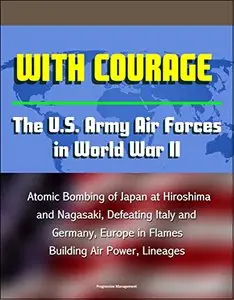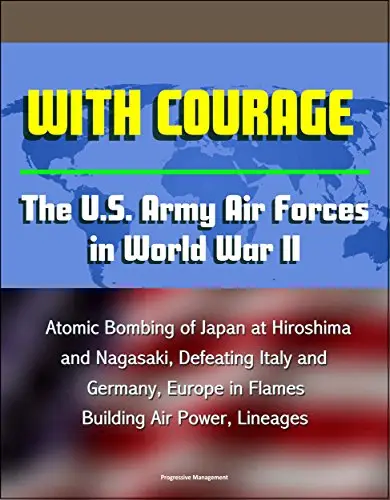With Courage: The U.S. Army Air Forces in World War II - Atomic Bombing of Japan at Hiroshima and Nagasaki, Defeating Italy and Germany, Europe in Flames, Building Air Power, Lineages by U.S. Government
English | Feb 25, 2015 | ISBN: 1410221792, 0160363969 | ASIN: B00U1KKE96 | 384 Pages | EPUB/PDF (Converted) | 36.2 MB
English | Feb 25, 2015 | ISBN: 1410221792, 0160363969 | ASIN: B00U1KKE96 | 384 Pages | EPUB/PDF (Converted) | 36.2 MB
This is a professionally-formatted free-flowing text reproduction of a major history of military aviation in World War II. With Courage: U.S. Army Air Forces in World War II retells the story of sacrifice, valor, and achievements in air campaigns against tough, determined adversaries. It describes the development of a uniquely American doctrine for the application of air power against an opponent's key industries and centers of national life, a doctrine whose legacy today is the Global Reach — Global Power strategic planning framework of the modern U.S. Air Force. The narrative integrates aspects of strategic intelligence, logistics, technology, and leadership to offer a full yet concise account of the contributions of American air power to victory in that war. When separate regional conflicts in the Far East and Europe merged into global combat in 1939, popular usage immediately referred to the new conflagration as a second world war, coming as it did a bare twenty years after the first general war of the age. In the years between 1941 and 1945, the United States of America joined the fray after a surprise attack on its Pacific fleet anchorage in Hawaii. The cataclysm involved all the major powers of the earth, took an estimated sixty million military and non-combatant lives, and became one of the defining events of the century. Over eight million American veterans of the conflict are still alive today to commemorate their part in what they came to regard as a great crusade. Among the most evident trends of the time were new military technologies. The rise of air power as an indispensable adjunct to ground and naval forces was one of the hallmarks of the era. Aircraft had shown their potential in World War I, but in the twenty years following that conflict, new theory and doctrine arose on their employment in war. World War II vastly expanded this thinking as events rewrote the orderly theory that had prevailed in the prewar Army Air Corps. America's industrial base, in feats of its own, gave U.S. and allied air forces the wherewithal to overcome the aerial might of the Axis. In an intelligence coup only revealed some thirty years after the end of the war, American and allied governments broke the most guarded communications codes of the enemy, an untold advantage in aerial and other operations. Perhaps the greatest achievement was in molding a citizen-soldiery into a fighting host. Of the twelve million men and women mobilized for the war, some two and a half million served in the Army Air Forces. Many gave the last measure of service; to these especially this history is dedicated.



